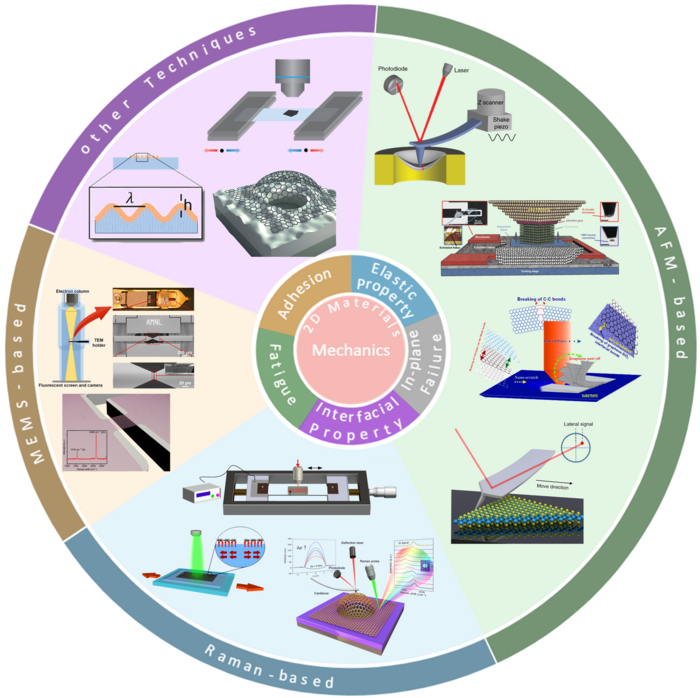Reporting in the International Journal of Extreme Manufacturing, researchers from McGill University, the University of Illinois, and the University of Science and Technology of China broadly reviewed the newest breakthroughs in the field of 2D materials mechanics by debating different vital mechanical features, which include the in-plane failure, elastic properties, fatigue, adhesion, and interfacial shear/friction.

In this article, the recent discoveries in the field of the mechanics of 2D materials are reviewed, including mechanical properties recently characterized (e.g., elastic, fracture, adhesion, friction, and fatigue), novel deformation mechanisms, state-of-the-art characterization technologies, and advancement in computational technologies. Image Credit: Guorui Wang, Hongyu Hou, Yunfeng Yan, Ritesh Jagatramka, Amir Shirsalimian, Yafei Wang, Binzhao Li, Matthew Daly, and Changhong Cao
Four key factors were concentrated on: new breakthroughs in the novel deformation mechanisms, mechanical properties, computational advancement, and characterization technologies.
The leading team PI, Prof. Changhong Cao, suggested, “by reviewing the intrinsic and extrinsic factors that govern 2D material mechanics, we hope that the community may draw design strategies for structural and interfacial engineering of 2D material systems for novel applications.”
Although, in recent times, considerable attempts have been made in the experimental examination of the mechanical properties of 2D materials via several different approaches, as reviewed in the article, the existing study on the mechanics of 2D materials over graphene is still in its early stage, specifically for developing 2D materials like metal-organic frameworks (MOFs) and covalent organic frameworks (COFs).
In addition to COFs and MOFs, we found that while a number of transition-metal dichalcogenides (TMDs), such as MoS2, WS2, MoSe2, and WSe2, have been widely studied, few mechanical investigations have been performed on other TMDs (e.g., VS2, MoTe2, TaSe2, etc.), as well as TMD alloys which exhibit unique chemical, electronic and magnetic properties.
Prof. Guorui Wang, Study First Author, University of Science and Technology of China
Although 2D heterostructures can be engineered and constructed both by self- and manual-assembly techniques in lateral or vertical fashions, there is, nevertheless, a lack of data about the mechanical characteristics of 2D heterostructures.
Hongyu Hou, study co-first author and doctoral candidate at McGill, stated “Currently, most mechanical studies of 2D materials focus on the static or quasi-static performance, while the dynamic behaviors in response to cyclic loading or impact loading are largely unexplored.”
Furthermore, the practical difficulties in the experimental testing and handling of ultrathin systems strengthen the value of precise computational approaches to screen the broad mechanical property space of 2D materials.
Prof. Matthew Daly, who is a specialist in computational mechanics and also the study co-leading author, commented, “With respect to the computational mechanics studies of 2D materials, there are also numerous advancement and future opportunities. For example, while DFT simulations offer a pathway to study the mechanics of these systems using first-principles approaches, the high computational cost, and limitations on simulation size limit the application of this method to complex 2D systems (e.g., multilayers and heterostructures)”.
“MD-based simulations greatly increase the accessible length-scales but present their own challenges in the limited availability of interatomic potentials for 2D materials. Machine learning presents a new opportunity to create interatomic potentials for 2D systems without the need to develop deep domain expertise in each system of interest. In addition, strain engineering of functional properties presents an inevitable next-step in the study of 2D materials. Despite some early progress in strain engineering topics, non-trivial challenges remain.”
Journal Reference
Wang, G., et al. (2023). Recent advances in the mechanics of 2D materials. International Journal of Extreme Manufacturing. https://doi.org/10.1088/2631-7990/accda2.